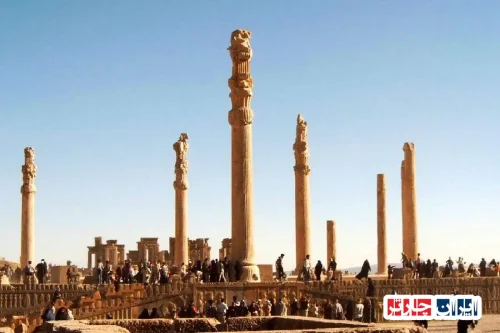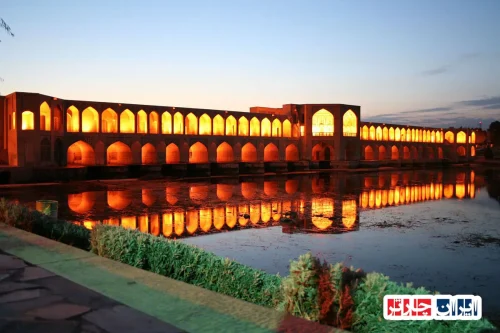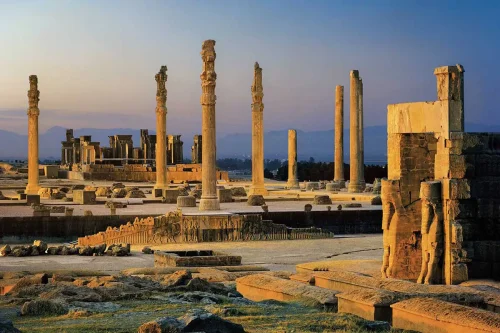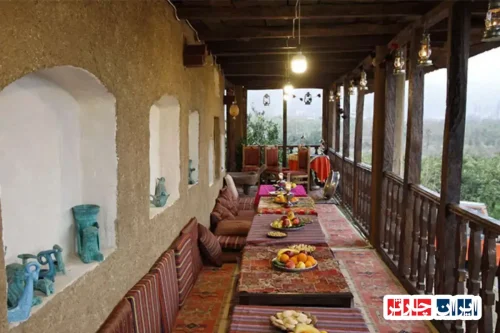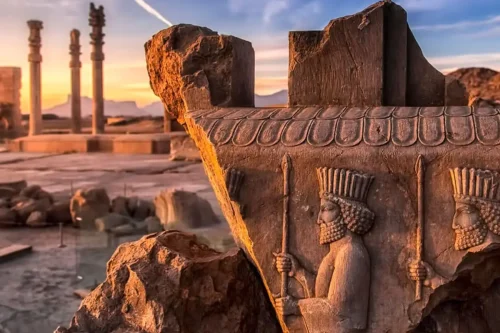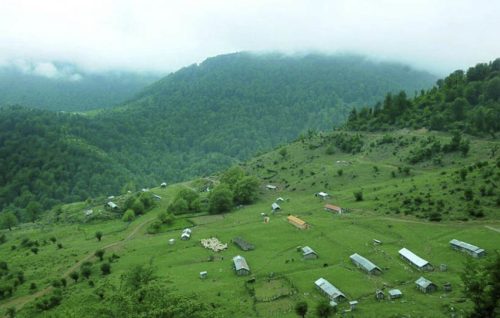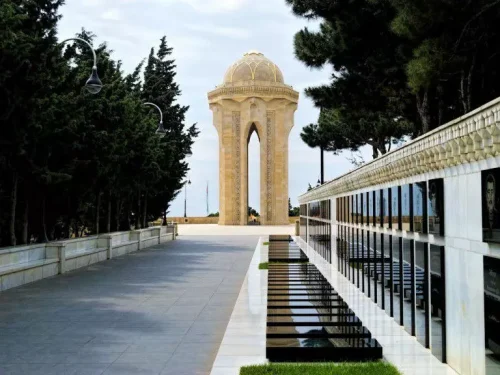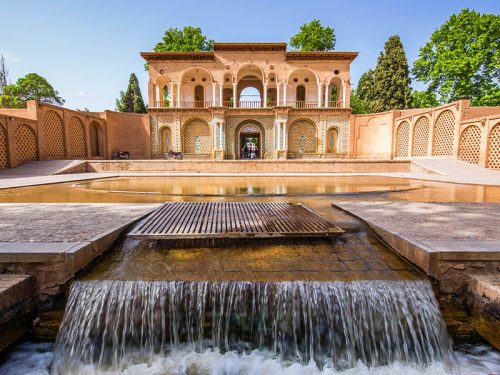News Source : https://www.irna.ir/news/85605858/%D8%B1%D8%AF-%D9%BE%D8%A7%DB%8C-%D9%85%D8%A8%D8%A7%D8%AF%D9%84%D8%A7%D8%AA-%DB%B9-%D9%87%D8%B2%D8%A7%D8%B1-%D8%B3%D8%A7%D9%84%D9%87-%D9%81%D8%B1%D9%87%D9%86%DA%AF%DB%8C-%DA%A9%D8%B1%D9%85%D8%A7%D9%86-%D8%A8%D8%A7-%DA%A9%D8%B4%D9%88%D8%B1%D9%87%D8%A7%DB%8C-%D8%AF%DB%8C%DA%AF%D8%B1
Traces of 9,000-Year-Old Cultural Exchanges in Kerman with Other Countries
Over the past 9,000 years, Kerman Province has played a significant role in cultural exchanges with various countries. The traces of these 9,000-year exchanges indicate extensive interactions between this region and neighboring civilizations. These cultural relationships have influenced many areas, including art, architecture, trade, and sciences. These cultural exchanges remain a strong root in the history and culture of Kerman. Archaeological studies more precisely examine these exchanges, highlighting Kerman’s role as a cultural bridge in the region.
The Footprint of Cultural Exchanges between Kerman and Neighboring Countries in Ancient Times
Kerman Province, strategically positioned along the Silk Road and close to neighboring civilizations via the Makran Sea, has always been a hub of cultural exchanges. Archaeological discoveries in various parts of Kerman exhibit extensive cultural exchanges with civilizations like Syria, Turkey, and Elam.
The Continuation of Cultural Exchanges between Kerman and Other Countries through Different Historical Periods
The most commercial periods of cultural exchanges between Kerman and other countries were during the Safavid and Qajar eras. The numerous caravanserais in Kerman province symbolize these cultural and commercial exchanges, where their influences are evident in local art, architecture, and language.
The Role of Mines and Spice Trade in Strengthening Cultural Relations between Kerman and Other Countries
With rich mines and a strategic position on the spice trade route, Kerman has played a significant role in cultural exchanges with other countries. This trade not only had economic benefits but also led to the exchange of ideas and values among different cultures.
The Influence of Foreign Civilizations on Kerman’s Art and Architecture through Cultural Exchanges
Kerman’s 9,000-year-old cultural exchanges with other countries have left deep impacts on the province’s art and architecture. Kerman’s traditional architecture, incorporating elements and structures imported from neighboring civilizations, showcases a fusion of different cultures.
Archaeological Discoveries in Kerman Province Indicating Cultural Exchanges with Other Countries
The ancient regions of Khorasan and Sistan in Kerman Province, with archaeological artifacts like clay beads and historical seals, reflect cultural relations with neighboring civilizations. These artifacts indicate widespread cultural and commercial interactions over thousands of years.
The Communication Network of Caravanserais and Its Impact on Cultural Exchanges between Kerman and Other Countries
The presence of historical caravanserais in Kerman Province served as connection points for trade and cultural routes. This strong communication network enabled the exchange of ideas, art, and sciences among nations, helping in strengthening inter-cultural relations.
The Cultural Continuity of Kerman with Other Countries from Prehistoric Times to Today
Cultural exchanges in Kerman not only date back to ancient times but have continued through different historical periods. This cultural continuity has helped preserve Kerman’s cultural identity and enhance relations with other countries.
Examining the Role of Technology and Geographical Changes in Cultural Exchanges between Kerman and Other Countries
The advancement of technology and geographical changes have played a vital role in developing cultural exchanges in Kerman Province. With the emergence of new communication and media tools, cultural exchange between Kerman and other countries is happening at a faster pace and with higher quality.
Kerman’s Cultural Heritage as a Bridge for Cultural Exchanges with Other Countries
Kerman Province’s rich cultural heritage situates it as a bridge between various civilizations. This heritage signifies widespread cultural exchanges and mutual influences among different cultures, which continue to be a part of Kerman’s history and culture.
FAQ
- What is the main topic of the article about Kerman?
- The article focuses on 9,000 years of cultural exchanges between the southern Kerman civilization and other countries, highlighting archaeological findings and historical interactions.
- During which historical period have Kerman’s cultural exchanges predominantly occurred?
- Cultural exchanges in Kerman predominantly occurred during the Neolithic period, approximately 9,000 to 6,000 years before Christ.
- How have modern technologies impacted cultural exchanges compared to ancient times?
- Modern technologies and new communication and media tools have accelerated and enhanced the speed and quality of cultural exchanges, while in ancient times, interactions were slower and confined to local geographical areas.
- Who is Nader Alidad Soleimani and what is his role in studying Kerman’s cultural exchanges?
- Nader Alidad Soleimani is an archaeologist and the head of the Cultural Heritage, Tourism, and Handicrafts Office of Kerman Province. He has conducted extensive research at the Esfandegah site in Jiroft, uncovering evidence of cultural and intellectual exchanges with distant regions.
- What significant artifacts have been discovered at the Esfandegah historical site in Jiroft?
- At the Esfandegah historical site in Jiroft, significant artifacts such as human statues and valuable seals have been discovered. These findings indicate cultural and intellectual interactions between the people of southern Kerman and civilizations from regions like Syria and southeastern Turkey.
- How do the seals found in Jiroft compare to those from Syria and southeastern Turkey?
- The seals found in Jiroft have similarities with those discovered in Syria and southeastern Turkey, indicating a common cultural origin or craftsmanship by a skilled artist, despite being over 2,000 kilometers apart.
- According to the article, with which civilizations did Jiroft interact?
- The Jiroft civilization interacted with civilizations from regions such as Mesopotamia (modern-day Iraq), the Indus Valley (modern-day Pakistan), and the eastern lands, reflecting a broad network of cultural exchanges.
- How has Kerman’s geographical location facilitated its cultural exchanges?
- Kerman’s location along the Silk Road and its proximity to eastern civilizations facilitated not only the trade of goods but also cultural exchanges with various ethnic groups and civilizations.
- What role did caravanserais play in Kerman’s cultural exchanges?
- Caravanserais in Kerman acted as centers of strong communication networks, enabling the movement of caravans and facilitating the exchange of ideas and cultures. Historical caravanserais in regions like Khorasan, Yazd, Rafsanjan, and Sirjan are examples of this network.
- Which period marked the peak of cultural exchanges in Kerman?
- The Safavid period marked the peak of cultural exchanges in Kerman, largely due to influential figures like Ganjali Khan who played significant roles in fostering cultural interactions.
- Who is Ganjali Khan and what was his contribution to Kerman’s cultural exchanges?
- Ganjali Khan was a prominent figure during the Safavid period who significantly contributed to Kerman’s prosperity by enhancing its cultural exchanges through his ability and influence.
- Which notable archaeological sites in southern Kerman are mentioned in the article?
- Notable archaeological sites in southern Kerman mentioned in the article include the Esfandegah historical site in Jiroft, the Ziggurat of Jiroft, and the Tappeh Kenar-e Sandal sites located near the village of Sandal, each providing valuable insights into the region’s ancient civilization.
- How old is the ziggurat discovered in Jiroft and why is it significant?
- The ziggurat discovered in Jiroft is over five thousand years old. Its significance lies in transforming the understanding of Near Eastern history, highlighting the advanced architectural and cultural development of the Jiroft civilization.
- What evidence suggests Kerman had cultural exchanges with civilizations over 2,000 kilometers away?
- The presence of seals in Jiroft similar to those found in distant areas such as Syria and southeastern Turkey indicates cultural exchanges between Kerman and civilizations located over 2,000 kilometers away.
- What is the significance of the Tappeh Kenar-e Sandal sites in Jiroft?
- The Tappeh Kenar-e Sandal sites in Jiroft are important archaeological locations providing evidence of ancient civilization’s architecture and cultural practices, further illustrating the region’s historical importance.
- How old is the Esfandegah plain settlement in Jiroft estimated to be?
- Estimated to be approximately 8,180 years old, indicating early human settlement and cultural development in the region.


